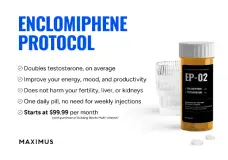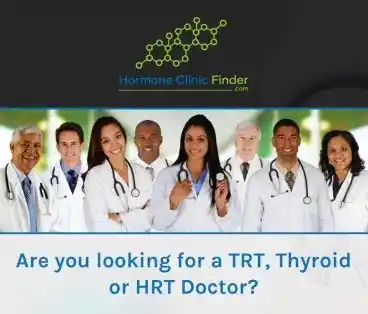11:25-12:50
* It is likely a U shape therapeutic curve with the lowest incidence of occuring at men with mid-range values of concentrations (350-550 ng/dL)

Subsequent VA database studies suggested an association between testosterone therapy and higher cardiovascular events in high-risk populations. However, these were retrospective analyses with inherent limitations.
Preclinical and Animal Studies:
Testosterone deficiency is linked to increased AF risk, which can be mitigated by exogenous testosterone.
Observational Data:
Key Differences:
* It is likely a U shape therapeutic curve with the lowest incidence of occuring at men with mid-range values of concentrations (350-550 ng/dL)
Testosterone Therapy and Cardiovascular Risk: Insights from an Interventional Cardiologist
Introduction
Good morning, everyone. You might be wondering why an interventional cardiologist is presenting at your seminar. My interest in testosterone therapy began when I noticed questions arising about its cardiovascular effects, especially before the publication of the TRAVERSE trial. Our own research contributed to the FDA’s decision to demand a cardiovascular outcomes trial for testosterone therapy. Due to time constraints, I’ll focus primarily on atrial fibrillation (AF) and summarize key findings from our work and others in the field.Cardiovascular Effects of Testosterone
Testosterone impacts the cardiovascular system at multiple physiological levels:- Endothelial Function & Hemodynamics: Testosterone influences blood vessel health and circulation.
- Inflammation & Cardiac Conduction: It affects inflammation and electrical conduction in heart tissue, which is relevant to arrhythmias like atrial fibrillation.
- QT Interval & Antiarrhythmic Effects: Testosterone shortens the QT interval, potentially improving the heart’s electrical stability.
- Lipid Profile: No significant direct effect on lipids has been observed.
- Myocardial Protection: Testosterone may reduce reperfusion injury after a myocardial infarction (MI), as seen in basic science models.
Thrombosis Concerns
A major concern has been the potential for increased thrombosis (blood clots) with testosterone therapy. Most of this data comes from ex vivo studies—testing blood from patients on testosterone in the lab. While some studies suggested increased platelet activity, these findings were not robust in clinical settings.Testosterone and Cardiovascular Outcomes
Generally, low testosterone is associated with higher mortality. The initial concern about cardiovascular risk came from the TOM trial, which reported a possible increase in MI and arrhythmic events. However, this trial was not designed to assess cardiovascular outcomes.Subsequent VA database studies suggested an association between testosterone therapy and higher cardiovascular events in high-risk populations. However, these were retrospective analyses with inherent limitations.
Our Clinical Trials
Our team conducted the first comprehensive trial examining testosterone’s effects across three groups:- Truly Hypogonadal, Untreated
- Treated, Not Normalized
- Treated, Normalized
- In men without prior cardiovascular events, testosterone normalization was associated with improved mortality, reduced MI, and fewer strokes.
- In men with prior MI, testosterone therapy did not show a mortality benefit, but importantly, there was no increased harm.
Testosterone and Atrial Fibrillation
Atrial fibrillation (AF) is the most common cardiac arrhythmia worldwide. Men have a fivefold higher risk of developing AF, and its incidence increases with age as testosterone levels decline.Preclinical and Animal Studies:
Testosterone deficiency is linked to increased AF risk, which can be mitigated by exogenous testosterone.
Observational Data:
- Rosenberg Study: Among ~1,000 men (average age 65), low testosterone was associated with higher AF risk.
- Framingham Study: In men aged 55–69, each standard deviation decrease in testosterone increased AF risk.
Reconciling Our Data with the TRAVERSE Trial
The TRAVERSE trial reported a higher incidence of non-fatal arrhythmias and AF with testosterone therapy. How do we reconcile this with our findings?Key Differences:
- Population Risk: Our studies adjusted for all risk factors; TRAVERSE included higher-risk patients.
- Testosterone Range: UK Biobank and other recent studies show the lowest event rates for AF occur when testosterone is maintained between 10–20 nmol/L (350–550 ng/dL). Both low and high levels outside this range are associated with increased risk.
Clinical Implications
- Therapeutic Range: The benefit of testosterone therapy for AF appears to be within a narrow range (350–550 ng/dL).
- Patient Selection: Consider comorbidities such as sleep apnea, which can interact with testosterone therapy and AF risk.
- Individualized Treatment: Carefully monitor and adjust testosterone dosing to maintain levels within the optimal range, especially in patients with cardiovascular risk factors.
Conclusion
Clinical and observational data suggest that low testosterone is associated with increased AF risk, but the relationship is not linear. The lowest incidence of AF occurs at mid-range testosterone levels. Both undertreatment and overtreatment may increase cardiovascular risk, underscoring the need for individualized therapy and careful monitoring.
Last edited by a moderator:














